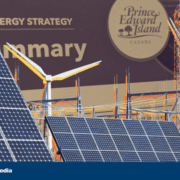CHICAGO, IL | University of Illinois at Chicago —
A new generation of green skyscrapers could help alleviate worldwide climate change, writes a University of Illinois at Chicago urban planner in a new book. “Eco-Towers: Sustainable Cities in the Sky” describes groundbreaking designs and built projects around the world, with 250 color photographs and drawings.
The book explores seawater-powered air conditioning, large-scale recycling of gray and black water, helical wind turbines and sunlight-sensing LED lights. As architects design taller buildings that serve more people and demand more from the environment and infrastructure, any improvement in their design and construction will benefit cities, says Kheir Al-Kodmany, professor of urban planning and policy.
“A tall building is an integral piece of the city infrastructure,” he says. “The true green skyscraper is one that forms symbiotic relationships with the social, economic, environmental and transportation aspects of its urban context.” Formerly an architect with Skidmore, Owings & Merrill, Al-Kodmany teaches urban design and served as a consultant on high-rise development in Amman, Jordan; a people-moving system for the Hajj for the Saudi government; and crowd management for the Taste of Chicago.
He considers green high-rises a large-scale answer to large-scale problems. “The long life-cycle of a skyscraper justifies the initial cost of green features, whether they are incorporated into new buildings or retrofitted into old ones,” he says.
The author examines green rating systems, including LEED (Leadership in Energy and Environmental Design). “In only 15 years, LEED has fostered a green industry and a movement toward better buildings overall,” Al-Kodmany says. “It has constantly raised the bar by requiring more nuanced, sophisticated measures to enhance buildings’ performance.
In the same manner, it has stirred a competition with other green systems.” Al-Kodmany says green technology drives new aesthetics, and he calls some innovative skyscrapers “eco-iconic.” He describes new materials and technologies that will make eco-towers more prevalent: compressed, fire-resistant hardwoods in buildings as tall as 30 stories, UltraRope elevator cables that are stronger yet lighter to increase speed and reduce energy use, and heliostats — computerized mirrors that maximize reflected light. He also recalls the history of green design since the 1890s, when architects designed early skyscrapers in “H” or “U” shapes or with central atria to maximize natural sunlight and ventilation.
Al-Kodmany notes that iconic towers like the Chrysler Building have always relied on natural ventilation and daylight, while the Empire State Building has been retrofitted to meet LEED gold and platinum standards.
Al-Kodmany says eco-towers are likely to prevail despite questions about marketability and regulation because they respond to a growing urban population. “Increasing demand will shape the future,” he says. “Ultimately, the eco-tower that embraces the technology of an era, local culture and the environment while being cost-effective will set the path.”














Comments